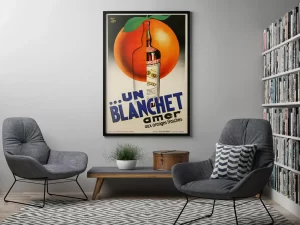Art therapy is a form of psychotherapy that has been used for decades to help people suffering from addiction. Art therapy allows people to express their feelings through art, which can help them develop coping skills for dealing with their addiction. In this blog post, we will explore how art therapy helps people suffering from addiction.
Art therapy in addiction recovery
In art therapy, patients are encouraged to express themselves through visual means. Since addiction and trauma are often painful, this is an effective technique for recovering addicts.
Art therapy engages the part of the brain responsible for decision-making and emotional release. This process helps a person overcome emotional trauma. A person in addiction recovery may suffer from depression, anxiety, guilt, or shame. These are all emotions that art therapy can help a person work through.
The parts of the brain involved in fight or flight are stimulated when a person makes art. Art therapy helps put a person in a better frame of mind, which allows them to work on other issues, such as addiction.
Art therapy techniques
Art therapy aims to find a way for people in recovery to talk about their experiences that is different from talking. Some of the ways and things that are practiced in art therapy are:
- Drawing
- Painting
- Writing poetry
- Sculpting
- Acting
- Creating music
- Journaling
Art therapy sessions are usually short (between 30 minutes and one hour) and may take place every week. Art therapy can be beneficial during the recovery process from a traumatic event because it can help you express complicated feelings.

Impacts and benefits of art therapy on addiction recovery
Art therapy can be used in various settings, including addiction treatment centers and hospitals. It is usually offered as part of a clinical program that includes other forms of therapy. Studies indicate that art therapy can remarkably improve a patient’s self-esteem, which helps improve mood and reduce anxiety. The art therapist also analyzes the patient’s artwork and uses it as the basis for discussion. Art therapy is best suited for patients in treatment who can use art as a medium to express their emotions.
Below are some benefits of art therapy in addiction recovery:
- Allows for a healthy release of feelings
- Serves as a way to express oneself
- Helps deal with stress
- Enables you to adjust while you’re getting better.
- Lessens any denial you may be feeling about your addiction
- Makes you want to change more.
- Offers a safe way to get rid of painful feelings
- Makes addiction less embarrassing
Art therapy can be a powerful tool for women’s recovery from addiction. It can help reduce feelings of isolation and depression and provide patients with opportunities to express their emotions and connect with others. Any women’s recovery center usually offers art therapy as part of a clinical program that includes other forms of therapy.
Conclusion
As common as the drug addiction problem is, there are many solutions too. You need to find the proper treatment process for an individual, as it varies from person to person. Art therapy has been prevailing as a great way to deal with drug addiction recovery and has helped millions worldwide.
Most Popular Posts:

